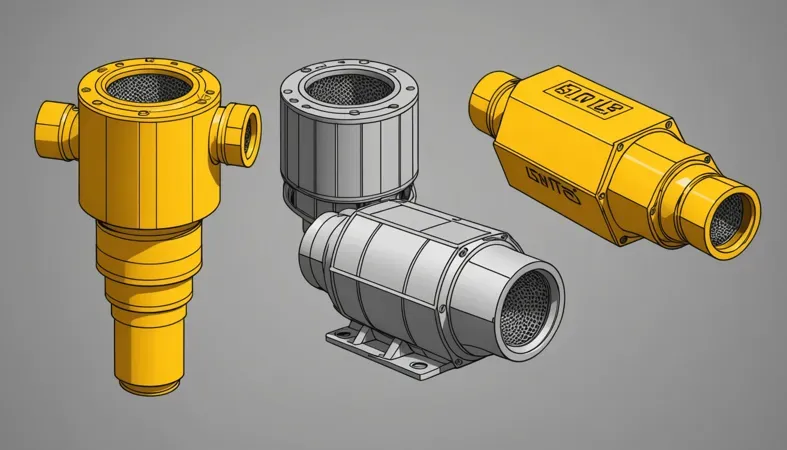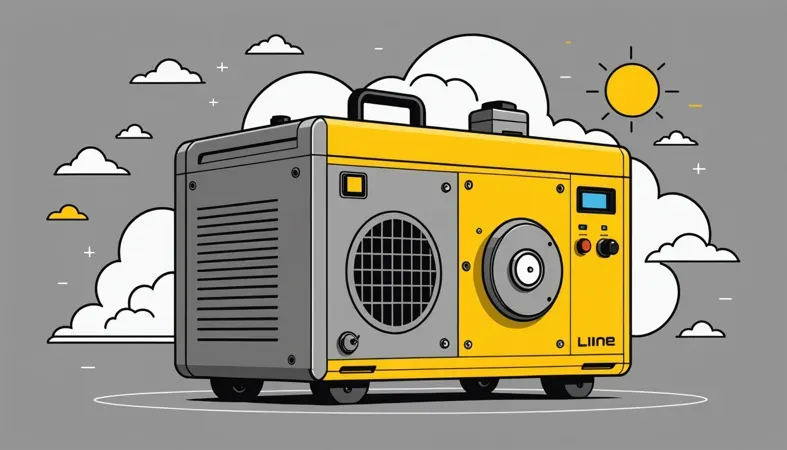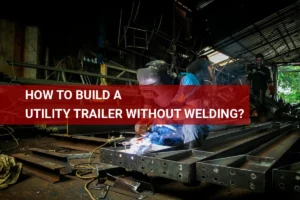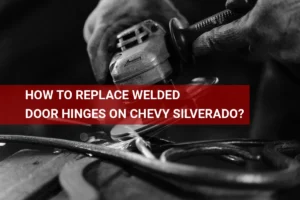How to Install a Catalytic Converter Without Welding? Step-by-step Guide, Precautions, and Benefits
Published on: January 16, 2025 | Last modified: March 4, 2025
By: Joe Carter
A catalytic converter is an essential part of your car’s exhaust system. It helps reduce harmful emissions by converting toxic gases into less harmful substances.
I’m often asked about how to install a catalytic converter without welding. It’s super important to follow the right steps to get it done correctly. I’ve seen what happens when folks skip details; they end up back in the shop way too soon, wasting time and money.
In this guide, I’ll cover what a catalytic converter is, types available, tools you’ll need, steps for installation, precautions to take, unique installation issues, and tips for aftercare. We’ll explore the top benefits and use cases too, plus other options for installing a catalytic converter. Whether you’re wondering can a catalytic converter be welded or how to replace a catalytic converter without welding, you’ll find something useful here.
Contents
- How to Install A Catalytic Converter Without Welding?
- What is a Catalytic Converter?
- Types Of Catalytic Converters
- Prerequisites: Things You’ll Need for Installation
- Common Tools for Catalyst Installation Without Welding
- Steps to Install a Catalytic Converter Without Welding
- Precautions
- Types Of Catalytic Converter Installations
- Factors Affecting Catalytic Converter Installation
- Unique Issues With the Catalytic Converter
- Top Benefits Of Installation
- Use Cases Of Catalytic Converters
- Other Options for Installing A Catalytic Converter
- Frequently Asked Questions (FAQs)
- Conclusion
- References
How to Install A Catalytic Converter Without Welding?
A catalytic converter reduces harmful emissions in vehicles. To install a catalytic converter without welding, use clamps or bolt-on kits. Most conversions take about 2 hours. It’s easier for DIYers but typically applies to older models.
What is a Catalytic Converter?
A catalytic converter is a key part of your car’s exhaust system. It turns harmful gases from your engine into safer emissions. Typically, it consists of precious metals—like platinum, palladium, and rhodium. It can reduce harmful emissions by over 90%. That’s impressive!
If you’re wondering how to install a catalytic converter without welding, many people ask this question. I recall when I worked on my vehicle—saving time and money was crucial. Without welding, you can often use high-quality clamps and connections to secure the new converter, making it manageable.
I once dealt with a car that was stalling due to a clogged converter. I chose to tackle the issue myself without welding. After researching how to replace a catalytic converter without welding, I found that precise measurements and quality parts are essential. Tools like exhaust tape and stainless-steel bands helped me prevent future leaks. It’s a great option for those who wonder, “Can you weld a catalytic converter?” Sometimes, it’s better to choose an easier method!
Types Of Catalytic Converters
What types of catalytic converters can you replace without welding?
-
Two-way Catalytic Converters
These converters reduce carbon monoxide and hydrocarbons. To replace this type, use a vent pipe connector. Start by removing the original parts and tightening the connector to energy-efficient bolts.
-
Three-way Catalytic Converters
They handle carbon monoxide, hydrocarbons, and nitrogen oxides. To swap one without welding, use clamped connections. Align the converter properly before securing the clamps.
-
Diesel Catalytic Converters
Designed for diesel engines, these converters reduce harmful emissions. Replace this converter using flex pipe couplers. First, cut the exhaust pipe, insert the couplers, and tighten them securely to prevent leaks.
-
Universal Catalytic Converters
These fit many vehicles due to their generic design. To install one, use bolt-on flanges. Cut the old converter and attach the new one using these flanges and bolts for a snug fit.
-
Direct Fit Catalytic Converters
This type is custom-made for specific vehicles. To replace it without welding, use a direct bolt-on kit. Remove the old part and bolt the new converter into place—it’ll save you time!
We have now covered the different types of catalytic converters. Next, we will examine the prerequisites for installation.

Prerequisites: Things You’ll Need for Installation
What do you need to install a catalytic converter without welding?
- Replacement Catalytic Converter: You need an exact-fit replacement like the Walker 16330 or Eastern Catalytic 40210. It’s crucial for proper emissions control and performance.
- Exhaust Band Clamp: Get a quality band clamp, such as the Thrush 3002, typically 2.5 inches (6.35 Cm) in diameter. This keeps your new converter securely in place without welding.
- Exhaust Pipe Sleeve: A sleeve like the Dorman 674-167 is needed to connect the converter to existing pipe sections, providing a leak-free joint.
- Joint Sealer: Use a high-temperature sealant like Permatex 85249. This creates a thermal barrier against vibrations and heat.
So far we covered the essentials needed for installation. Next, let’s look at the typical tools for catalyst installation without welding.
Common Tools for Catalyst Installation Without Welding
When installing a catalytic converter without welding, using the right tools is just as crucial as quality parts. This list highlights essential tools that will aid in a smooth installation.
| Tool | Description | Why it’s Important |
|---|---|---|
| Socket Set | A variety of sockets, especially metric sizes, for loosening and tightening exhaust bolts. | Grips onto fasteners effectively, helping you avoid stripping or damaging bolts. |
| Torque Wrench | Used for applying precise torque to bolts during installation. | Ensures connections are tight enough to prevent leaks but not over-tightened which can cause damage. |
| Exhaust Strap Wrench | A specialized tool designed to grip and hold exhaust components without slipping. | Helps in securely tightening band clamps around the new catalytic converter. |
| Pry Bar | A tool used to leverage parts during installation. | Facilitates adjustment of the position of the catalytic converter for better alignment. |
| Penetrating Oil | A lubricating spray to loosen rusted bolts. | Helps make the removal of old components easier, preventing bolt breakage. |
You should now have a good understanding of common tools for catalyst installation, their importance, and usage. In the next part, we’ll discuss the installation steps for a catalytic converter without welding.
Steps to Install a Catalytic Converter Without Welding
Here are the steps to replace your catalytic converter without welding. Follow them for a successful installation.
-
Prepare the Vehicle
First, elevate your vehicle securely using jack stands. Ensure it’s flat and stable, about 12 inches (30 Cm) off the ground for easy access. Getting the tire angle right is crucial for a clear view. Once that’s done, make sure the exhaust system is cool before starting work; safety first!
-
Remove the Old Catalytic Converter
Loosen the bolts holding the old catalytic converter in place with a wrench. Apply penetrating oil if needed to aid in removing rusted bolts. Once loose, support the old unit with one hand while you finish removing the last few bolts. After removal, dispose of it properly; many scrap yards accept these for recycling.
-
Install the New Catalytic Converter
Align the new catalytic converter with the existing flanges and ensure all mounting holes match. Bolt it in place, tightening to the manufacturer-recommended torque, typically around 20-30 lb-ft (27-40 Nm). Avoid cross-threading any bolts at this step! You want a snug fit without over-tightening—breakage could happen!
-
Check for Leaks
Start the engine and check for any exhaust leaks around the new converter’s connections—listen for hissing sounds. Use a soap solution; bubbles indicate a leak. If you find any, tighten the affected bolts or use exhaust sealant as a temporary fix. Catching leaks now saves you future headaches.
We’ve wrapped up the steps for installing a catalytic converter without welding here. Next up, we’ll look at precautions.
Precautions
Let’s discuss essential safety measures for installing a catalytic converter without welding.
- Wear Protective Gear: Use gloves, goggles, and a mask to prevent injury. I recommend full-face respirators for the best protection.
- Check Clearance: Ensure there’s at least 8 inches (20.32 Cm) under the vehicle to avoid accidents.
- Inspect Tools: Use verified tools to ensure safety. A reliable torque wrench, like the TEKTON 24340, guarantees precision.
- Secure Vehicle: Always use jack stands, not just jacks, to secure your vehicle and prevent falls while you work.
Taking safety precautions protects you; never overlook them—they’re crucial for your peace of mind!
Types Of Catalytic Converter Installations
Let’s move on to the types. We’ll cover Bolt-On Installations, Clamp-On Installations, Direct Replacement Installations, Aftermarket Installations, and Performance Upgrade Installations.
-
Bolt-on Installations
Bolt-on installations require no welding. They use bolts and gaskets for a secure fit. Typically, you’ll need standard hand tools, and the process takes about 1–2 hours. If you’re looking for a straightforward method, this might be your best option.
-
Clamp-on Installations
Clamp-on installations also avoid welding. These connectors use clamps to hold the converter in place. You’ll usually finish in about an hour, making them great for temporary fixes or quick swaps.
-
Direct Replacement Installations
Direct replacement installations mean you remove the old catalytic converter and replace it with a new one that fits without modifications. This process is a bit more involved but usually takes no more than 2–3 hours in a garage setting.
-
Aftermarket Installations
Aftermarket installations offer more options but may require specific adjustments since these converters might not fit your vehicle perfectly. You may spend a few hours ensuring everything aligns properly.
-
Performance Upgrade Installations
Performance upgrades enhance speed and efficiency. They often involve high-flow catalytic converters, which can be more complex. While they sound beneficial, ensure compliance with local laws. Plan for about 3–4 hours to complete the installation properly.
Factors Affecting Catalytic Converter Installation
What factors impact your ability to replace a catalytic converter without welding?
-
Vehicle Make and Model
Your vehicle’s make and model determine the compatibility of the catalytic converter. Older cars may need specific converters, while different exhaust designs can complicate installation.
-
Type Of Catalytic Converter
The catalytic converter type—like universal or OEM (Original Equipment Manufacturer)—affects the installation. A universal converter might fit various vehicles, but specific models often require exact parts for efficient emissions control.
-
Emission Regulations Compliance
It’s critical to comply with local emission regulations. Using the wrong catalytic converter can lead to fines or rejection during inspections, especially in states with strict rules like California.
-
Condition Of Exhaust System
Your exhaust system’s condition heavily influences installation. If it’s rusty or damaged, you might face additional challenges when connecting the new converter.
-
DIY Skill Level
Your hands-on skills matter. More experience means fewer mistakes, while inexperience can lead to installation failure or safety hazards.
Unique Issues With the Catalytic Converter
Let’s now look at some specific problems with the catalytic converter.
-
Improper Fitment
The catalytic converter must fit snugly at both ends. If it’s misaligning, check the pipes for gaps. Adjust or replace it if necessary.
-
Connection Leaks
Sealed connections are critical for the catalytic converter. Leaks indicate wear. Use a smoke test or listen for hissing sounds to find leaks. Then, tighten fittings or apply high-heat sealant.
-
Insufficient Sealing
The catalytic converter should be completely sealed. If you feel vibrations or hear rattling, inspect it. You might need to replace gaskets or clamps to ensure a proper seal.
-
Incorrect Installation Angle
The catalytic converter needs the correct angle for optimal flow. Check the installation guide. If it’s pointing downward, reroute the exhaust system properly.
-
Compatibility Problems
The catalytic converter must match your vehicle’s model. Look for emissions ratings and numbers on your old unit. If they’re mismatched, replace it with the correct model specified in your documentation.
Top Benefits Of Installation
The biggest perk of installing a catalytic converter without welding is convenience. I used it for a quick fix on my old car, saving me time and hassle.
It can also save you money on labor costs, reduce the need for expensive tools, and be compatible with a wider range of vehicles. Plus, it allows for easy removal and replacement, which is great for maintenance. You won’t believe how straightforward it is!
Use Cases Of Catalytic Converters
Catalytic converters serve various purposes without welding. They have many applications, including:
- Restoration of Classic Cars: Helps meet emission standards while preserving vintage aesthetics. It’s popular among classic car enthusiasts who want to maintain originality without heavy modifications.
- Hybrid Vehicle Maintenance: Useful for replacing damaged catalysts without extensive shop time. Mechanics prefer clamp-on solutions for quick fixes that significantly reduce downtime.
- Off-Road Modifications: Suitable for custom exhaust setups. Outdoor enthusiasts value easy installation options to bypass welding while enhancing performance systems.
- Fleet Vehicle Repairs: Perfect for quick catalytic converter replacements in commercial fleets, minimizing vehicle downtime. Businesses favor this method to keep costs low and productivity high.

Other Options for Installing A Catalytic Converter
There are several solid alternatives to consider. You might use a universal catalytic converter, which fits various vehicles without welding. Options like clamp-on kits, such as the AP Exhaust 800211, simplify the installation and save you time and effort. When considering protective gear for various tasks, it’s important to ask if a welding mask is safe for viewing eclipses.
Let me share an insight I’ve gained over the years: Sometimes, it’s easier to use a catalytic converter cleaner to improve performance instead of replacing it. In certain cases, if you’re handy, you can also opt for a straight pipe replacement. Just remember, regulations vary by location!
Frequently Asked Questions (FAQs)
Now let us look at some common questions about catalytic converters. I typically get asked these.
Does a Catalytic Converter Have to Be Welded on?
Yes, a catalytic converter often has to be welded on. Welding ensures an airtight seal between the converter and the exhaust system, preventing leaks. A solid connection also supports the converter’s structural integrity under high temperature and pressure, keeping emissions controlled. Choosing the appropriate safety measures is essential, including selecting the minimum shade for arc welding.
Can You Install a Catalytic Converter Yourself?
Yes, you can install a catalytic converter yourself if you have the right tools and skills. DIY installation can save you between $100 to $300 in labor costs. Just ensure to follow safety precautions and local regulations regarding catalytic converter replacements.
What Happens if I Replace My Catalytic Converter With a Straight Pipe?
Replacing your catalytic converter with a straight pipe can lead to severe legal and environmental issues. It will increase exhaust flow but can cause your vehicle to fail emissions tests and spark fines. It’s also harmful to air quality, contributing to pollution.
Is Replacing a Catalytic Converter Easy?
Replacing a catalytic converter isn’t necessarily easy, but it can be manageable for someone with basic mechanical skills. The difficulty often lies in loosening rusted bolts and ensuring proper alignment. Typically, the job can take anywhere from 1 to 3 hours.
Can You Weld a Cracked Catalytic Converter?
Yes, you can weld a cracked catalytic converter. However, it’s usually a temporary solution. A durable repair requires proper materials and techniques, as continuous heat and exhaust flow can worsen the crack. Consider replacing the converter for a long-term fix.
Can a Catalytic Converter Be Welded?
Yes, a catalytic converter can be welded when a full replacement isn’t feasible. Proper welding ensures a robust repair. To maintain proper function, use a specific high-temperature exhaust welding rod to handle intense conditions and avoid future leaks.
Conclusion
We covered the essentials on how to install a catalytic converter without welding, including its definition, types of converters, required tools, step-by-step installation, precautions, unique issues, and aftercare tips. We also discussed benefits and use cases relevant to catalytic converters, along with alternative methods for installation and common questions about the process.
To simplify, installing a catalytic converter without welding involves using clamps and gaskets instead of traditional welding methods. You’ll need a few key tools, like a pipe wrench and a jack, along with proper precautions, like ensuring a secure fit to avoid leaks. Contact me if you’d like more guidance on how to install a catalytic converter without welding or have further questions.
For more information and the latest articles related to this topic, feel free to return to our homepage at What is Welding.
References
- American Welding Society. (2020). AWS Welding Handbook: Welding Science and Technology (Vol. 1). Miami, FL: AWS.
- Norrish, J. (2006). Advanced Welding Processes. Boca Raton, FL: CRC Press.
Joe Carter is a retired welding professional with over 40 years of hands-on experience in the industry, spanning ship repair, structural welding, and even underwater projects. Joe is a master of MIG, TIG, and Stick welding. Passionate about mentoring the next generation of welders, Joe now shares his decades of expertise and practical insights to help others build rewarding careers in welding.
American Welding Society, Automotive Tools, Catalytic Converter, DIY, DIY Car Repair, Emission Control, Installation Guide, Regulations, Structural Integrity, Vehicle Maintenance, Welding







